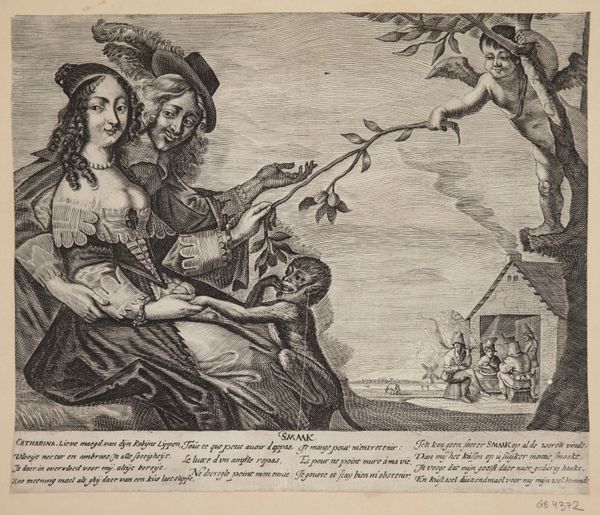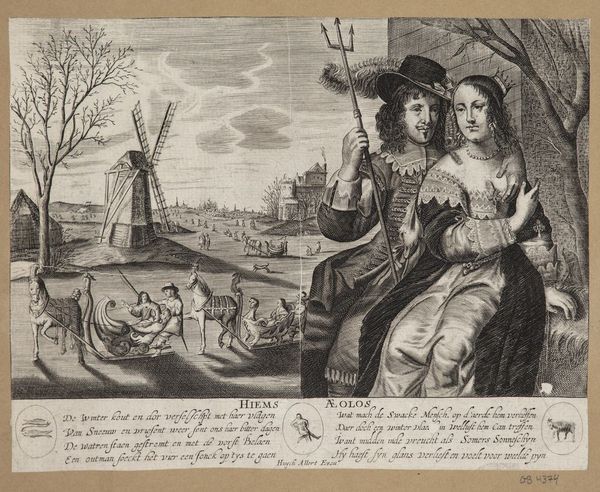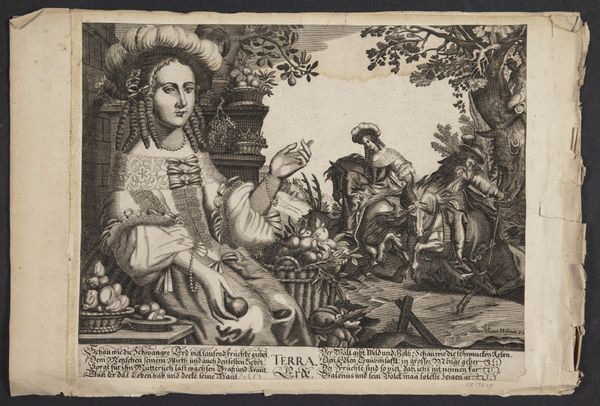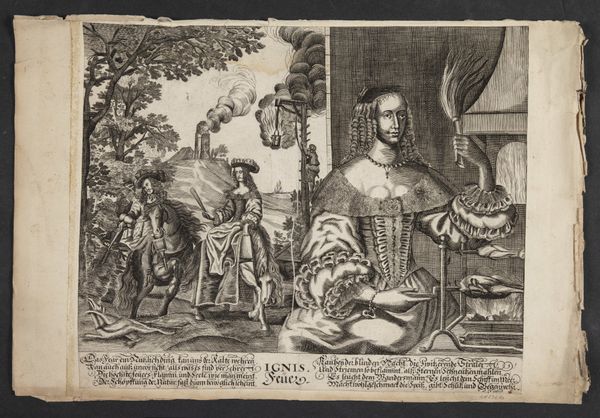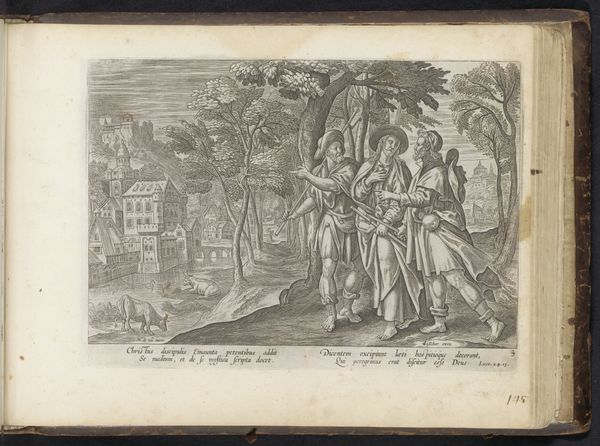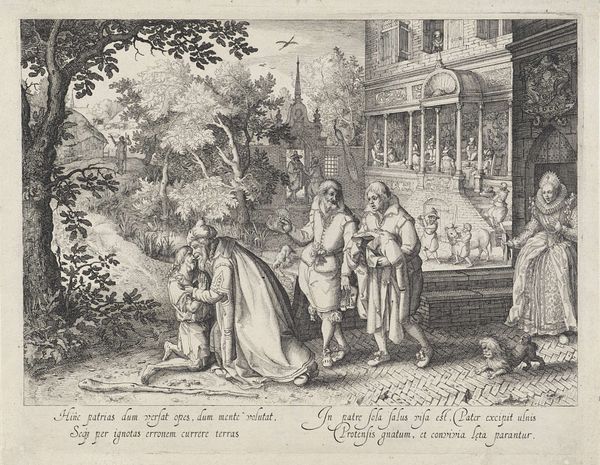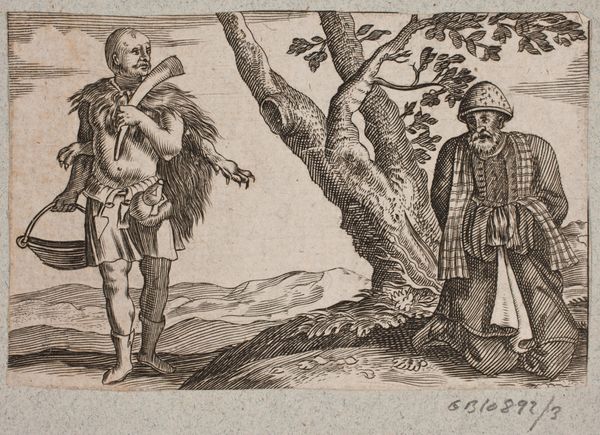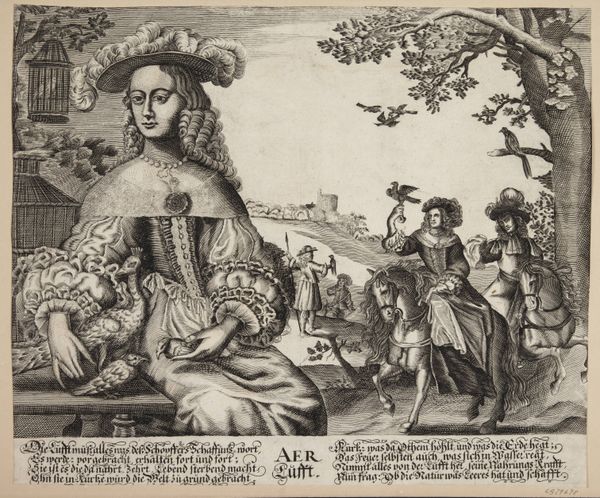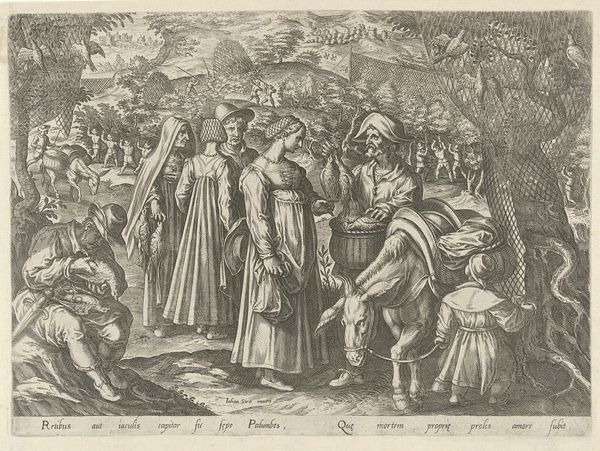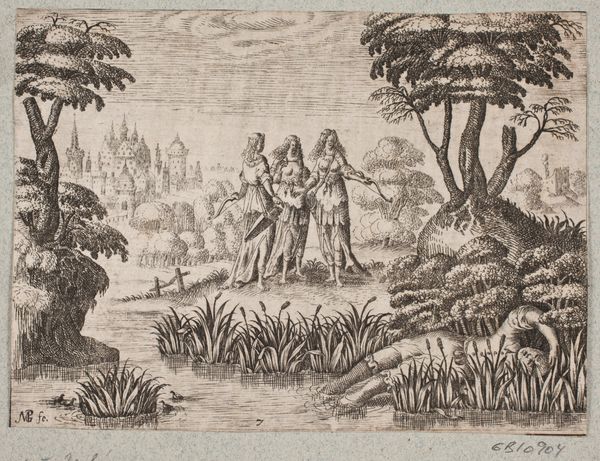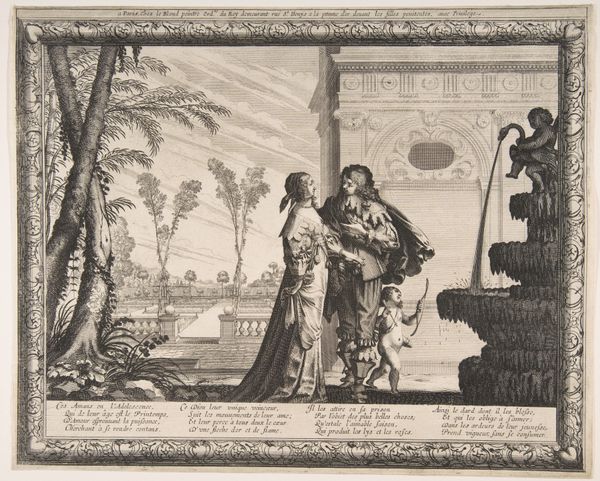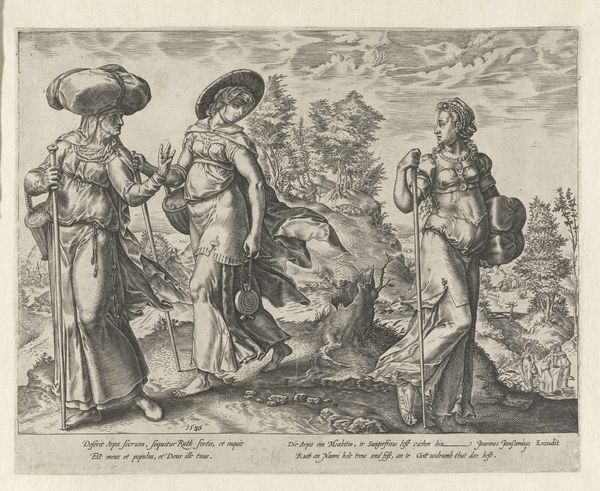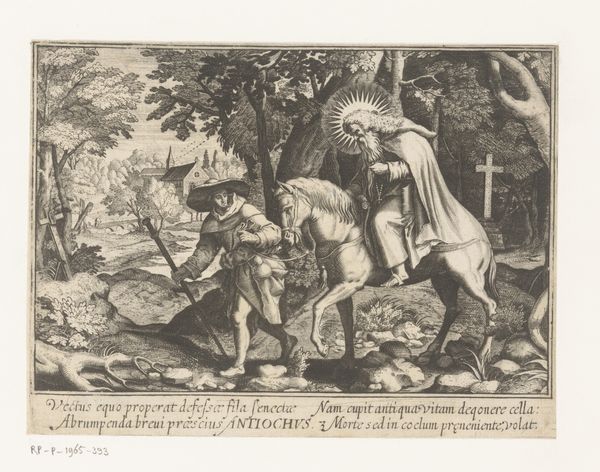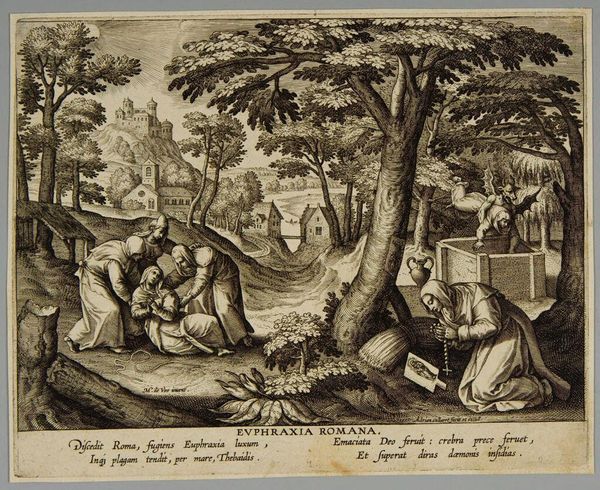
print, engraving
#
allegory
#
baroque
# print
#
landscape
#
genre-painting
#
engraving
Dimensions: 247 mm (height) x 317 mm (width) (bladmål)
Curator: Welcome. We are standing before "Autumn (Autumnus - Bacchos)," an engraving dating back to sometime between 1639 and 1684. It's currently held at the Statens Museum for Kunst. Editor: My immediate impression is one of divided realities. The formal, almost portrait-like figures contrast strongly with the genre scene happening in the background. Curator: Indeed. It is categorized as both genre-painting and landscape and contains allegorical elements. Look at how the print medium allowed the engraver to render minute detail and intricate patterns on the figures' garments. We can explore how printmaking enabled dissemination of these allegorical representations to a wider audience. Editor: Absolutely. Notice the tonal gradations, which contribute to a sense of depth, directing our eyes into the landscape beyond. The composition places us, the viewers, into the role of participant and observer simultaneously. Curator: This engraving, crafted by Heylricus Allert, demonstrates how autumn and the figure of Bacchus, Roman god of wine, could be leveraged for didactic messaging and genre depictions in the artistic milieu of the period. It also illuminates themes related to labor, the production of goods, and social relationships linked with harvests, which reflect certain socio-historical perspectives. Editor: I find the use of iconography incredibly engaging. We have astrological symbols and what appear to be short verses—likely Dutch—inscribed at the bottom. These elements, together, produce an aesthetic tapestry. Curator: Right, and consider the influence of these prints; consider how readily images and ideologies would spread and the impact this had on contemporary viewers' lives. Editor: Looking closely reveals the artistry embedded within even these mass-produced images, reminding us of art’s multifaceted capabilities and functions. Curator: Absolutely, it's been interesting looking into the ways the medium intersects with class, labor, and cultural expression in a piece such as this one. Editor: Agreed. I found analyzing the use of contrasting spatial arrangement to reveal complexity equally enriching.
Comments
No comments
Be the first to comment and join the conversation on the ultimate creative platform.
